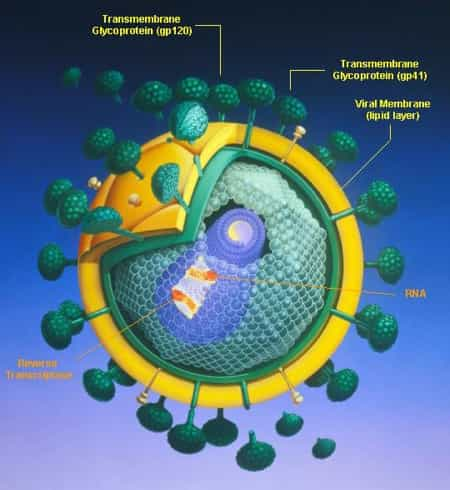To eliminate HIV from the body, at a minimum, infected, quiescent T cells would need to be forced to produce viral proteins. This would cause the destruction of these cells, which would be attacked by drugs that block the spread of the virus from one cell to another. New data suggest that an intensification of the control of viral replication, obtained by hitting new cellular or HIV targets, would also be useful. The new therapeutic targets for the drugs are: the viral infectivity factor (VIF); lenticular epithelium-derived growth factor (LEDGF); the DNA and protein complex that makes up the chromosomes (chromatin) and the viral protein U (VPU). The drugs on the market target the viral envelope protein and the CCR5 receptor of T cells, to block the entry of the virus into the cells, and inhibit some HIV enzymes: reverse transcriptase; integrase and protease, to stop, respectively, the transcription of the HIV genome , its insertion into cellular DNA and the maturation of HIV proteins.
You may also like
Liver stem cells
What better argument than that of stem cells to start the new year: totipotent cells have been used to treat serious liver disease. In Brazil, 15 people were chosen from those on the waiting list for liver transplantation and were – on a voluntary basis – subjected to cell therapy. "We are still in a… Continua a leggere Liver stem cells
Nanotubes and stem cells for bone reconstruction
It has been found that the use of implants made of titanium nanotubes together with stem cells can accelerate the growth of bone tissue. The group of bioengineers from the University of California – San Diego used nano-biotechnology technologies that made it possible to carry out this experiment. In fact, they were able to place… Continua a leggere Nanotubes and stem cells for bone reconstruction
Stem cell transplant to treat diabetes
Medical science is increasingly aiming at the prevention and repair of the defect at the origin of the disease, according to a new philosophy aimed at intervening further upstream of the pathogenic process than on the final effects with devices or treatments aimed at mitigating rather than definitively curing a disease, such as diabetes. Confirmations… Continua a leggere Stem cell transplant to treat diabetes
Artificial cells: the new frontier of therapy
Research destined to revolutionize the future of medicine has been published in the well-known journal Science: the birth of artificial life, i.e. artificial cells. The architect of this was Craig Verter, renowned scientist, protagonist in 2000 of the Human Genome Project, pioneer of long-term experiments but also a character criticized by ethics commissions for his… Continua a leggere Artificial cells: the new frontier of therapy
